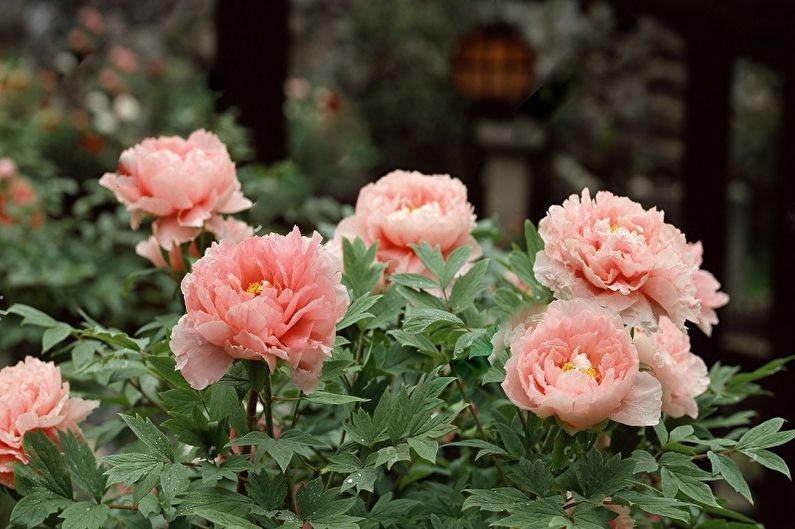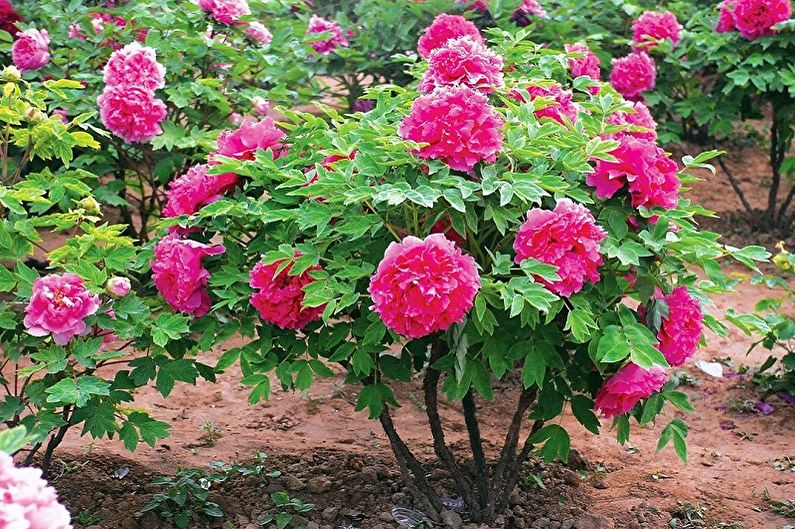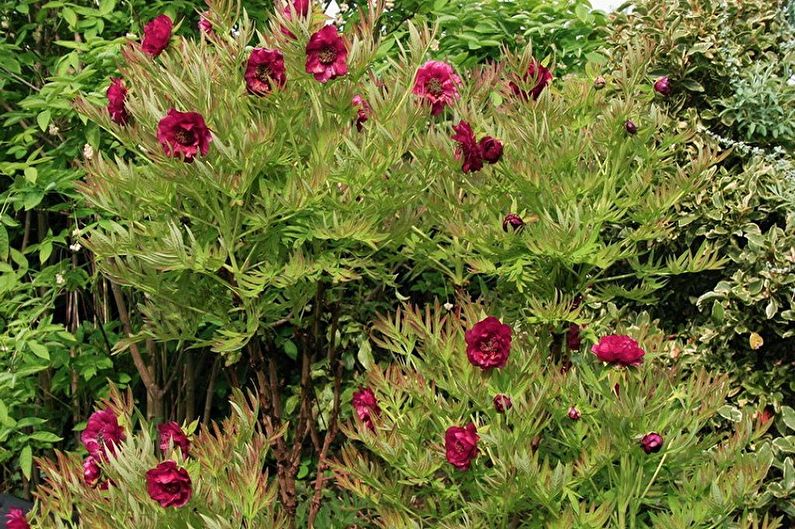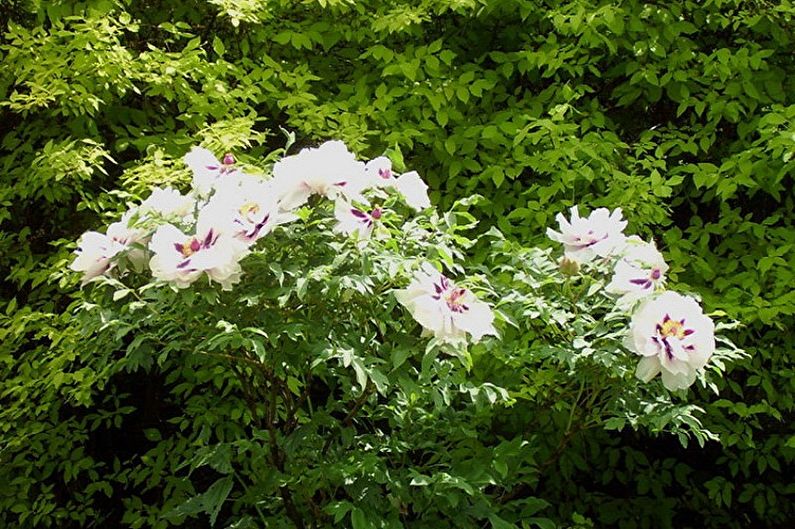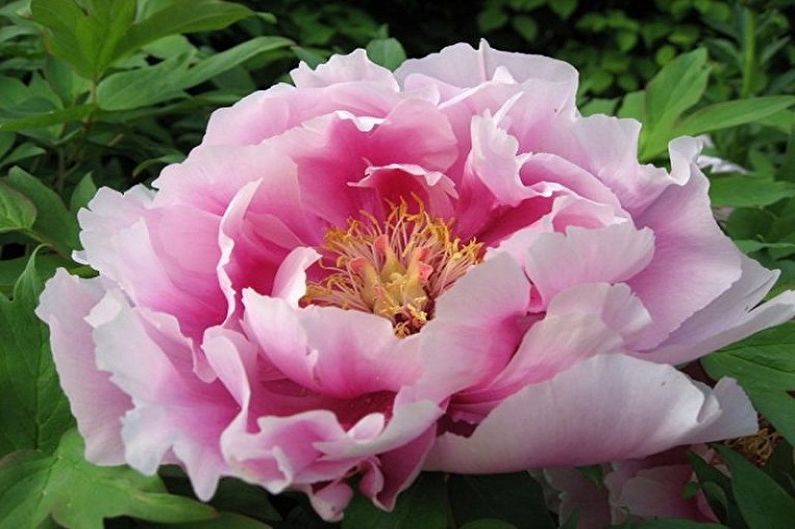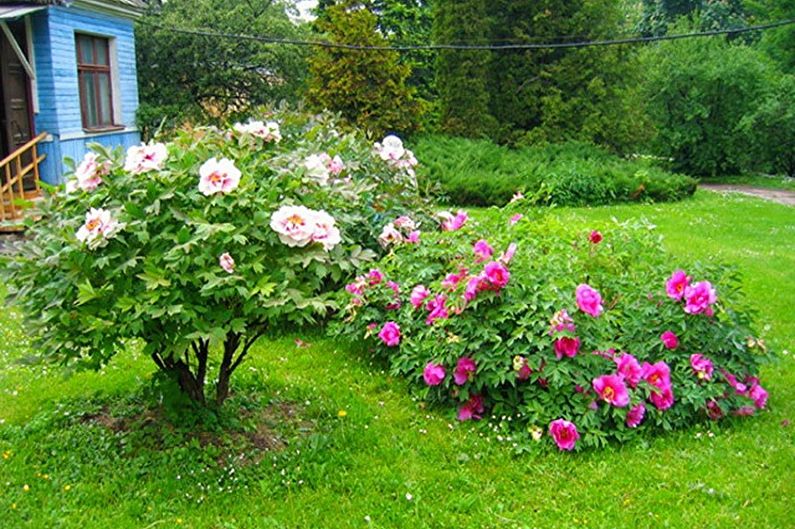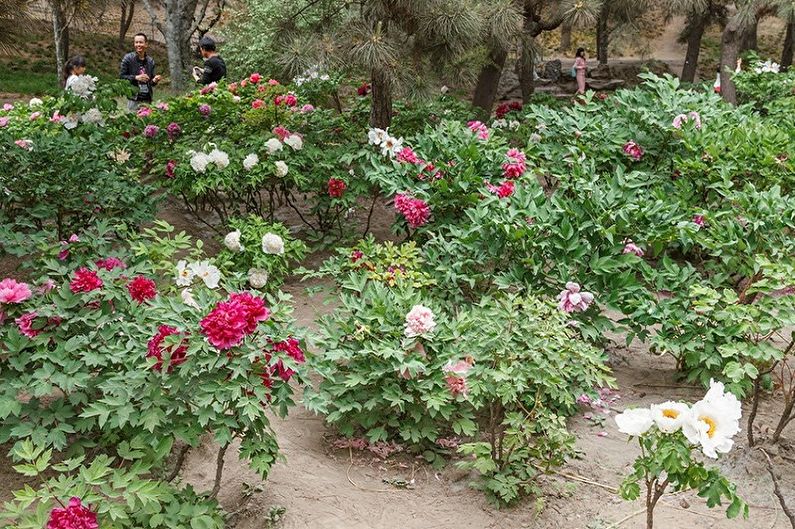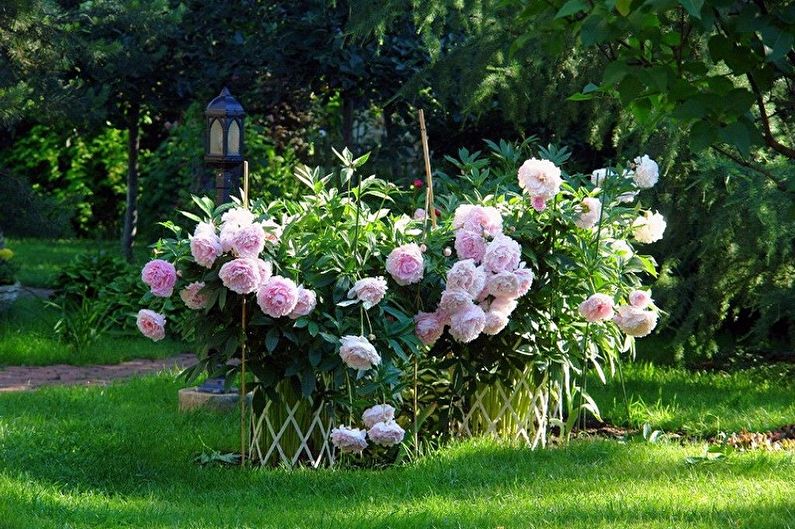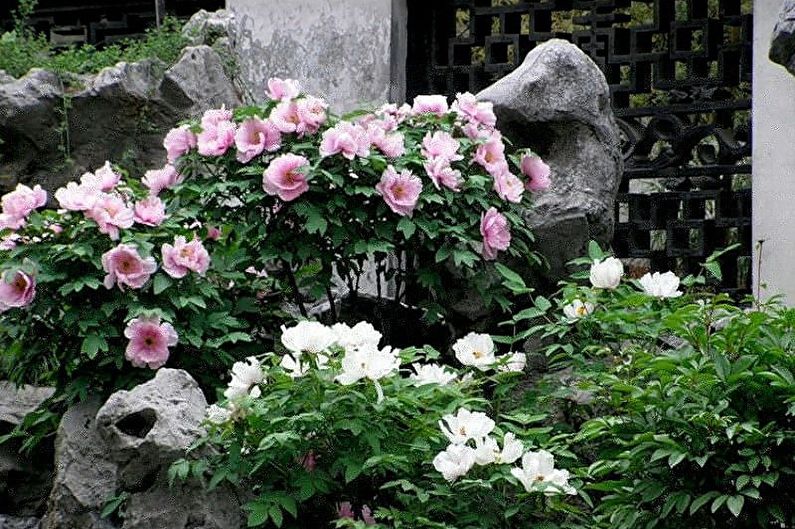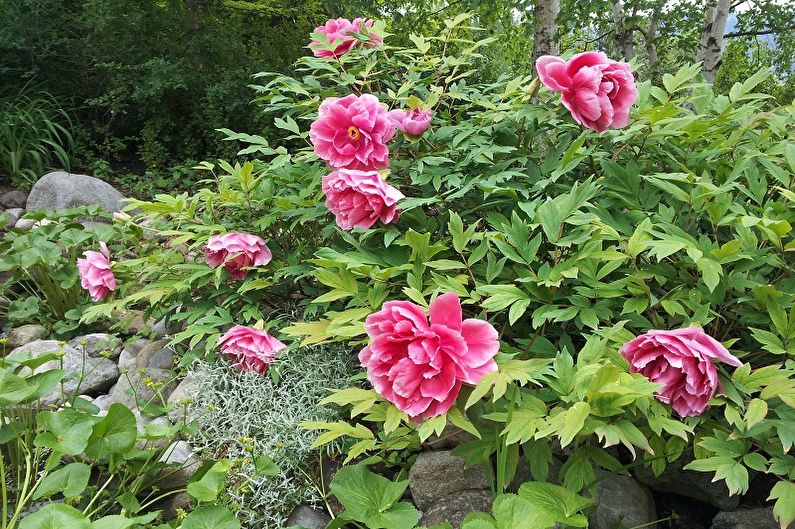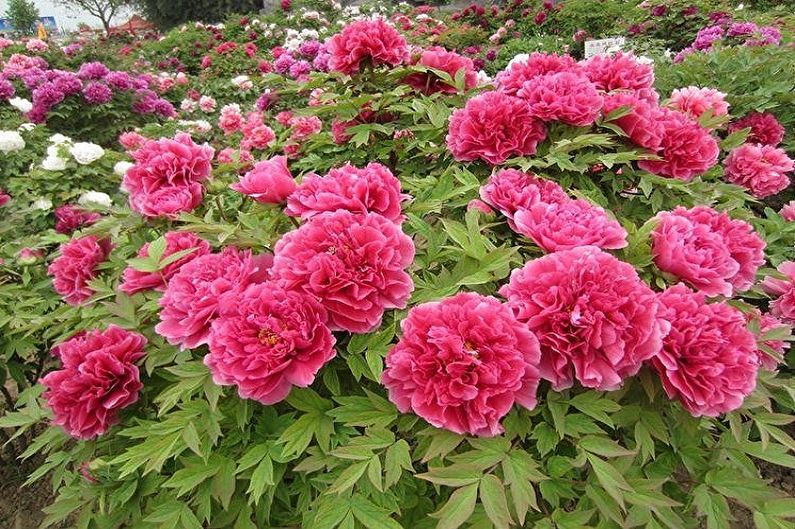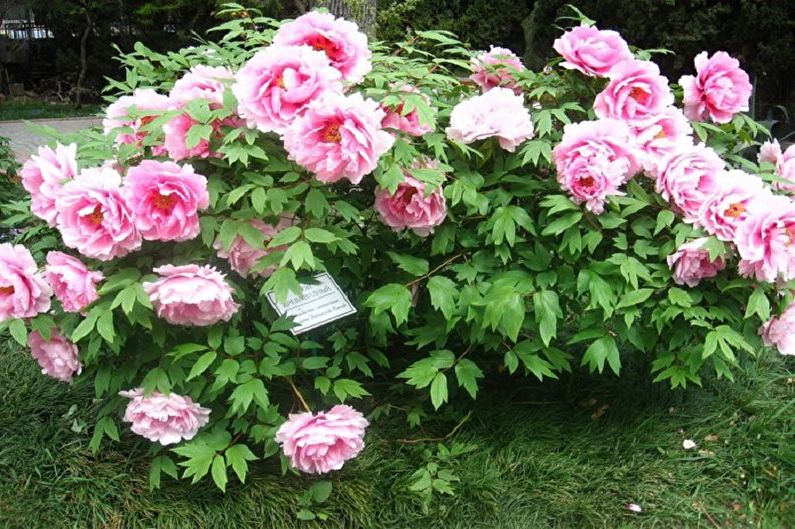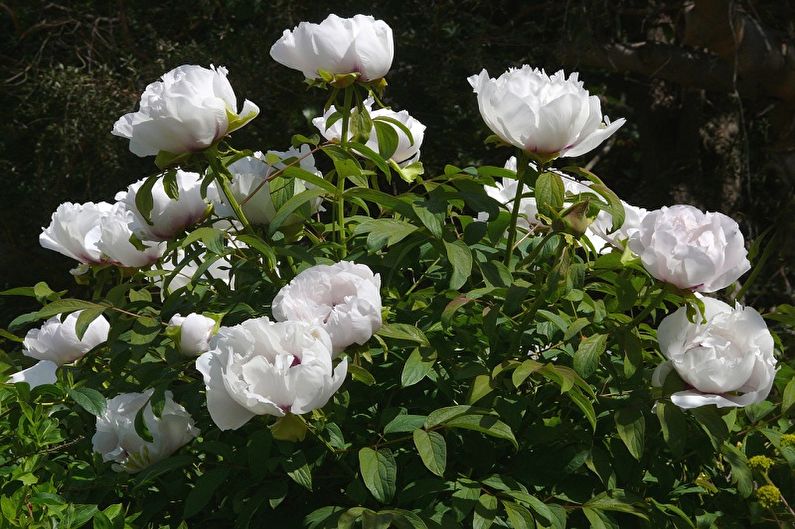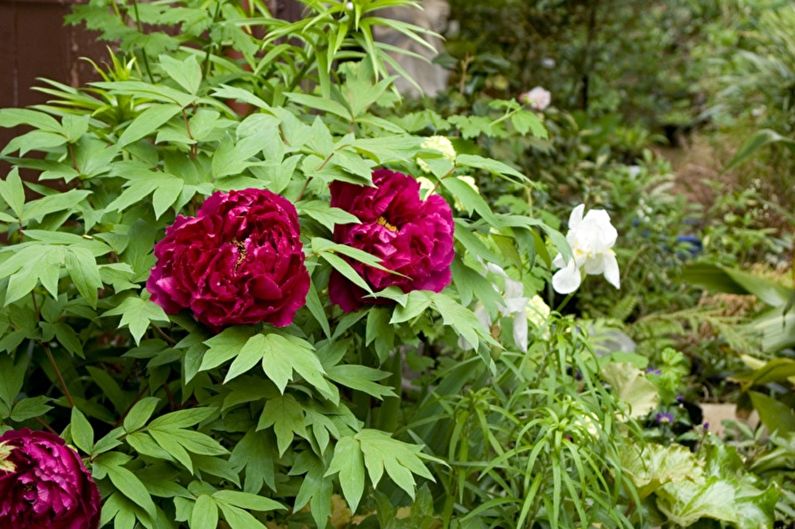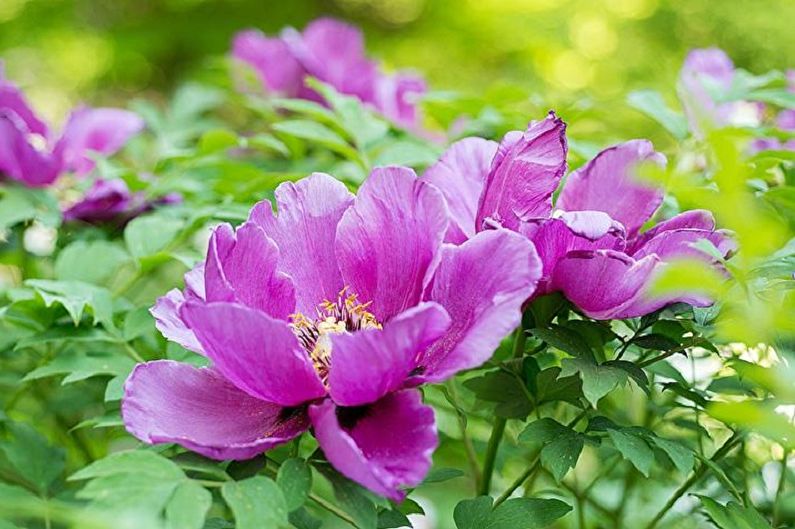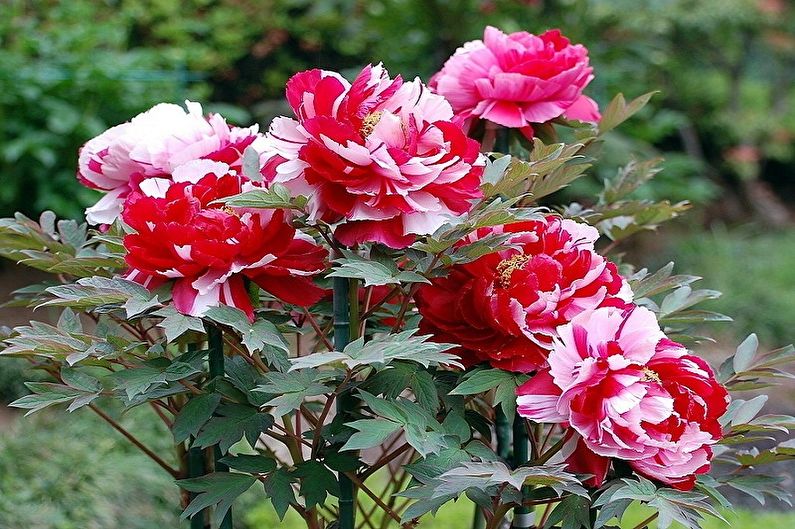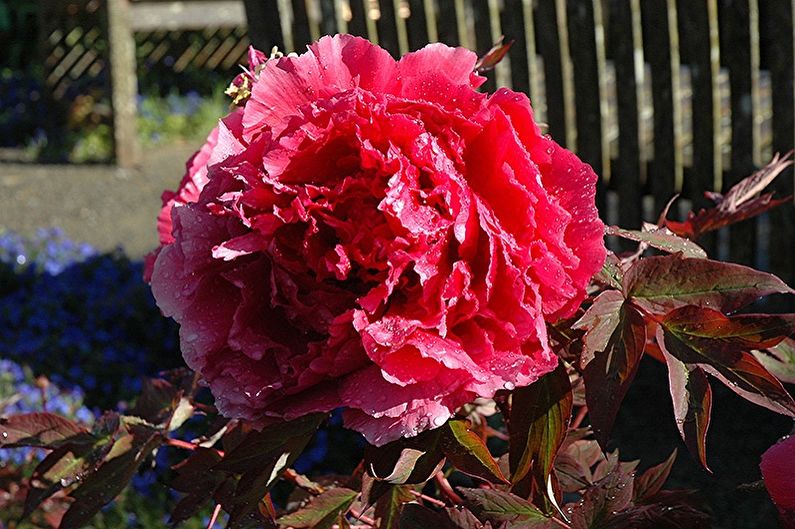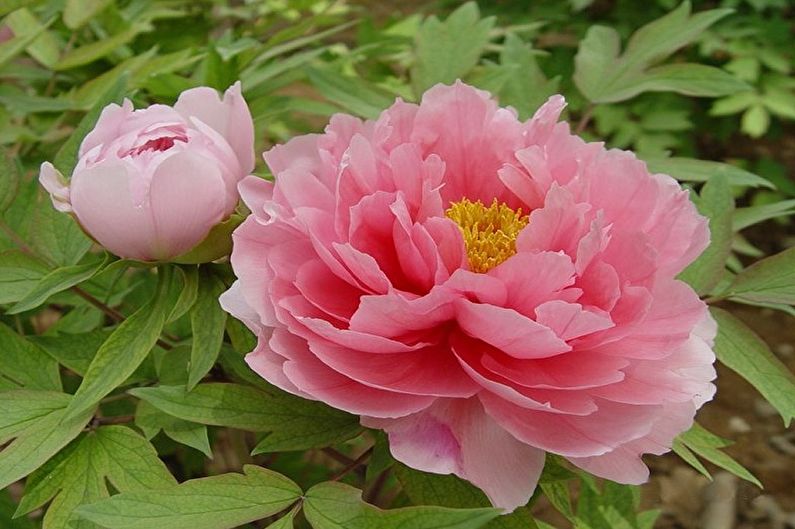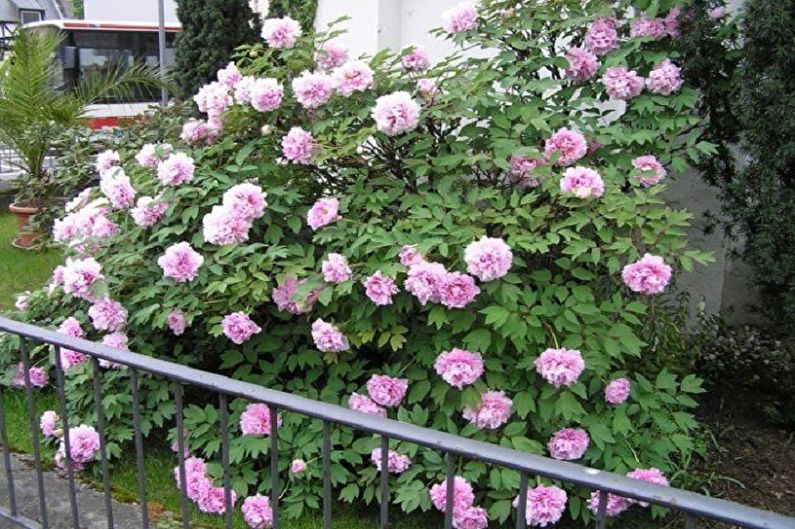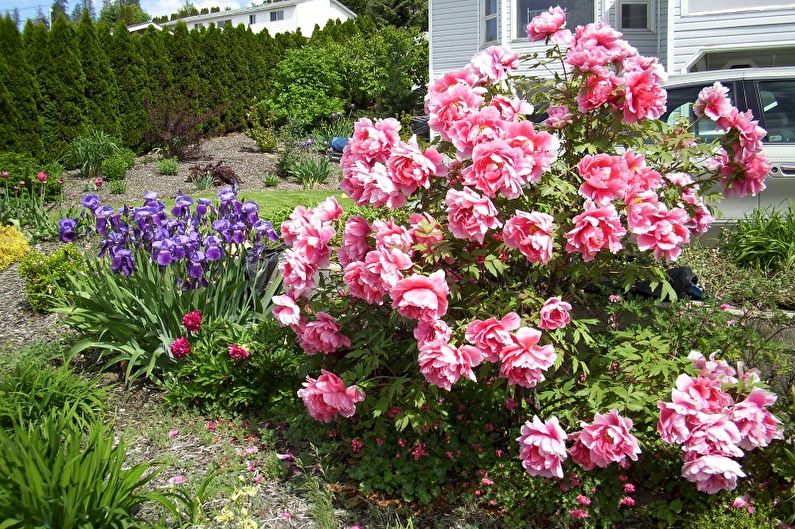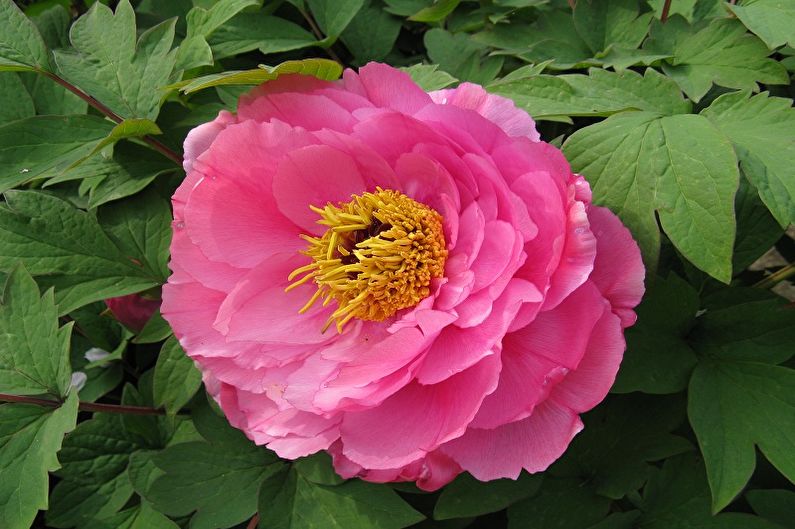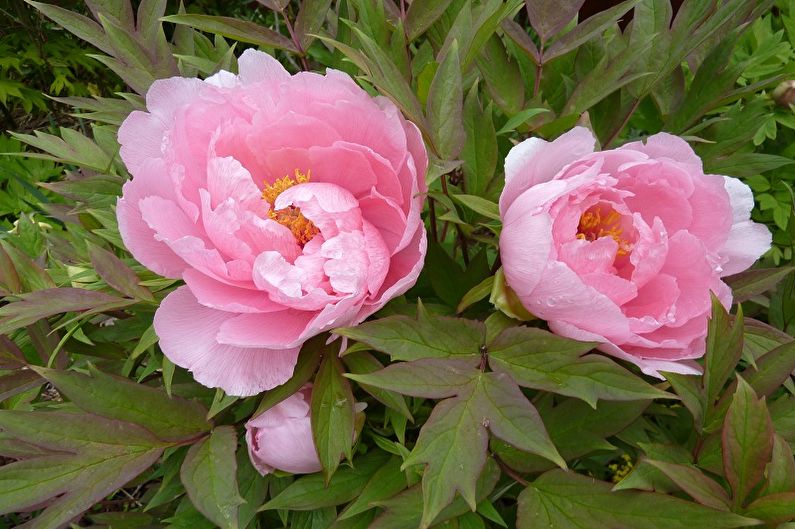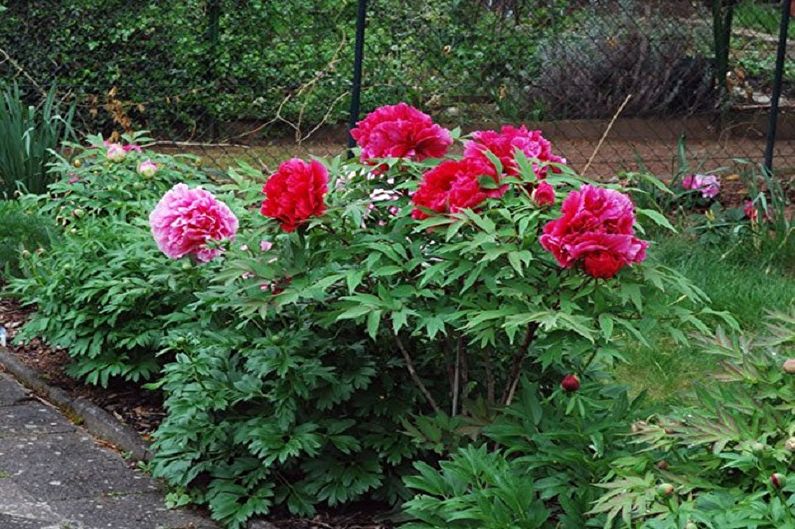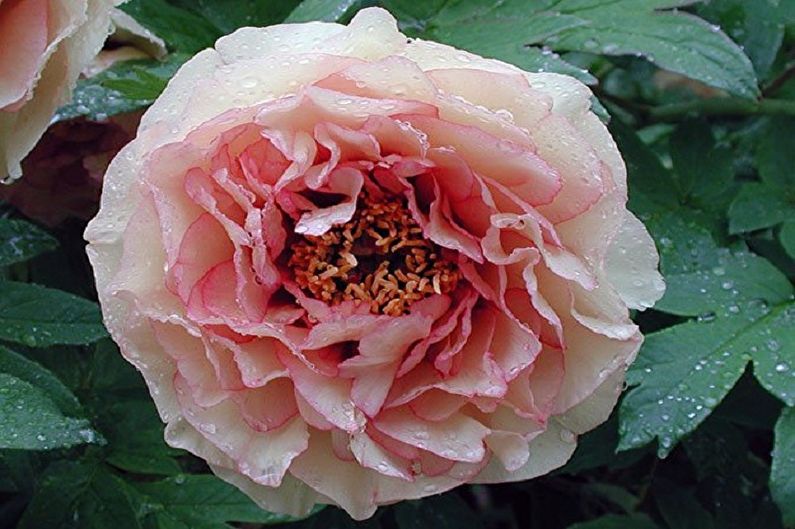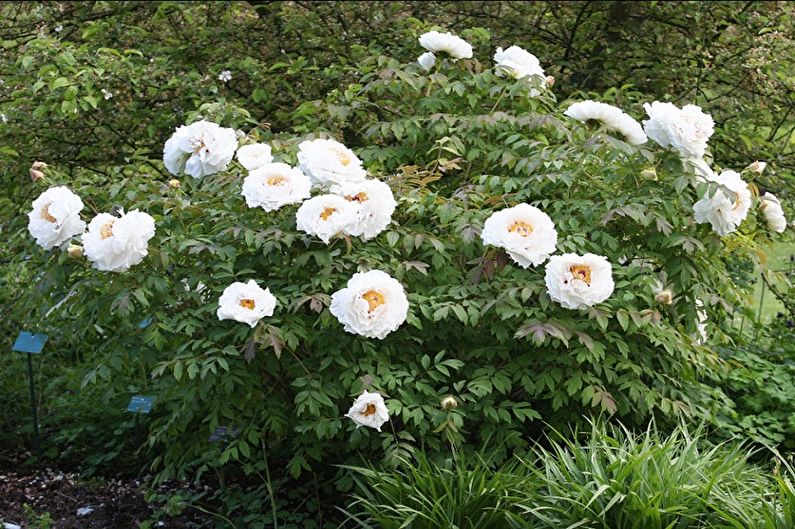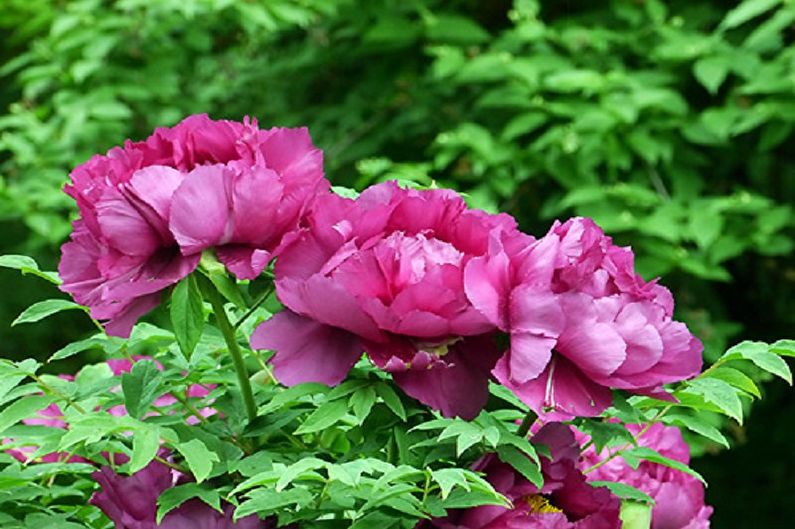
The lush shrubs of tree peonies are incredibly beautiful and fragrant. Moreover, they are not demanding in care, are not prone to frequent diseases and are characterized by long years of life. Therefore, many gardeners dream of acquiring this beautiful flower in their own area.
Description and types
Tree-like peony is a type of vegetation of the Peony family. Many botanists agree that he means a whole group of shrubs. Be that as it may, the general characteristics of this wonderful representative of the flora do not cause controversy.
So, tree-shaped peonies are a bush reaching a height of 150-200 cm with light brown stems and large flowers in red, white, yellow or pink. Petals have large sizes and corrugated structure, and large stamens clearly stand out against their background. Inflorescences can be terry or semi-double in texture. Flowering lasts for two weeks, but if the weather is not too hot, then the period may be longer. After flowering, the shrub remains as beautiful and retains decorative properties due to the beautiful shape of the leaves.
A tree peony does not require complex care and is quite resistant to various diseases.
Today, officially there are more than five hundred varieties of these peonies. Most of them were bred in China. A huge number of species, as a rule, are divided into several main groups:
- Hybrids obtained by crossing Delaway peonies and yellow;
- The Sino-European group has large inflorescences with terry texture;
- The Japanese type can have both non-double and semi-double small, light flowers;
- Ito-hybrid - a variety descended from a grass and tree peony, received the same foliage from the first parent, and from the second - a stalk hanging down in winter.
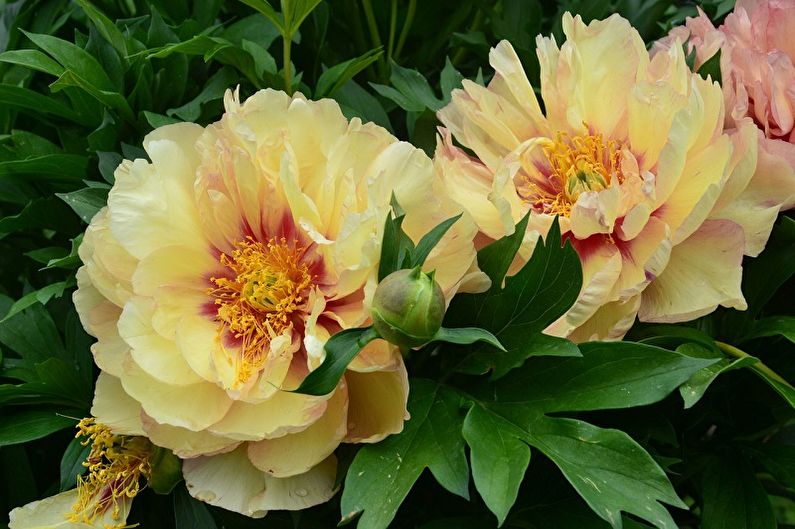
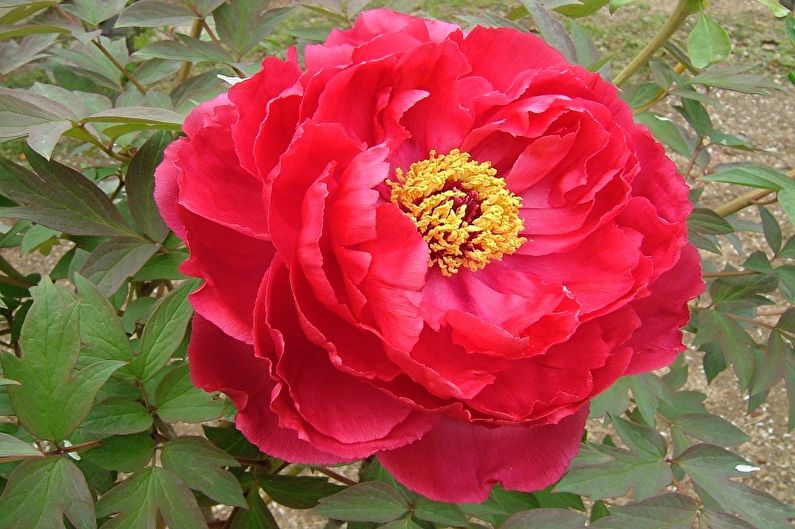
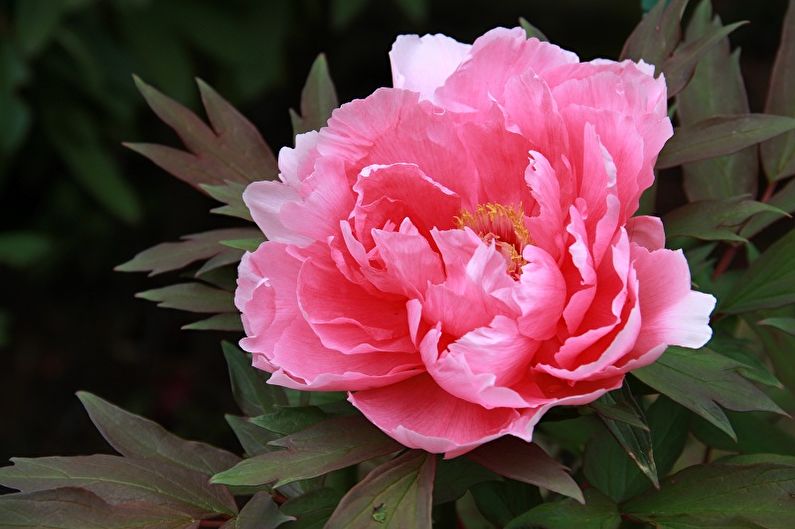
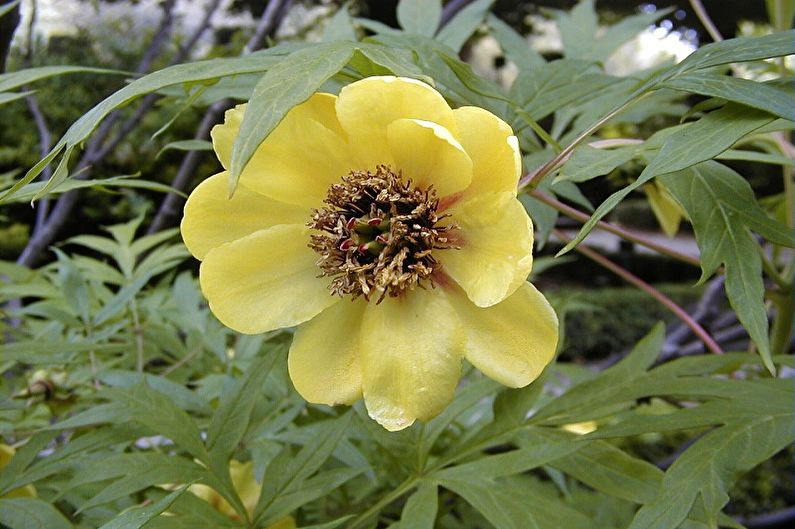
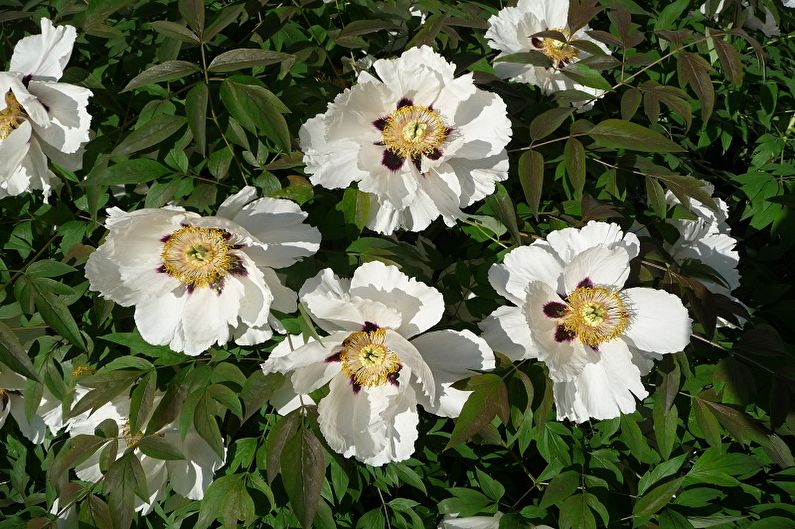
Tree peony planting
Peonies are best planted in the fall. It begins in the second half of August and lasts until the last days of September. Before you begin to plant directly, you need to choose a location on which beautiful flowers will grow. Tree peonies are very fond of the sun, and therefore do not tolerate neighborhoods with tall and dimensional buildings and plants, which can limit the color of access to the rays.
The best option for the soil is loam. If the soil on your site is sandy, then enrich it with turfy soil, peat, clay and natural fertilizer. Add clay and sand to the clay soil. Do not neglect these conditions, because they are able to provide your peonies with a long existence. So, a plant can please its owners every year for 100 years!
If the groundwater is too deep, then you need to dig a conical depression with a diameter of 60–80 cm, and put sand or pebbles on the bottom with a layer of 25–35 cm. In the case of high acidity of the soil, it is worth adding 250–300 g of lime, then pour soil and plant a tree peony in it. For good fixation and germination of the rhizome, abundantly water the ground. When the liquid is completely absorbed, fill in the recess, while leaving the neck above the surface. When planting several units of this plant, drip them at a distance of 1, and preferably 2 m.
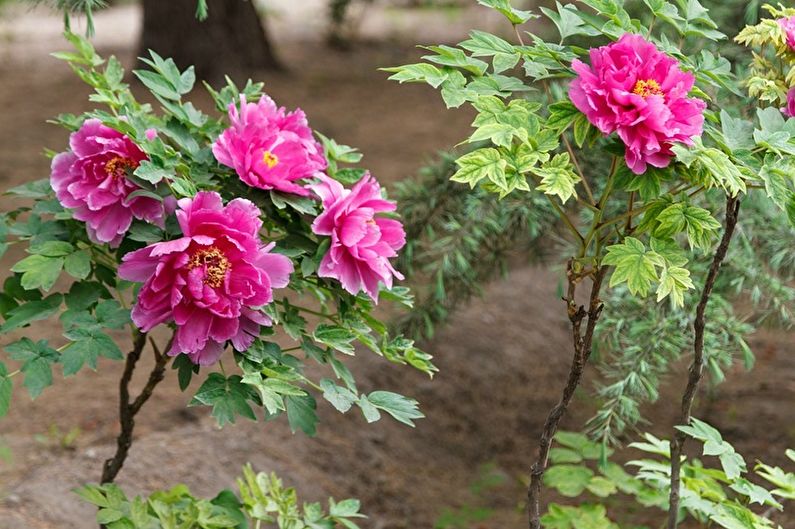
Feeding and watering
In the first two years of its existence, the tree-like peony does not need constant and special care. Further, you can enter top dressing in the form of 300 g of bone meal. In early spring, when the plant begins to let out the first sprouts, as well as during swelling of the buds, add nitrophoska in the amount of 100-150 g.
If possible, water the plant with ash diluted in water. It is best to do this with a frequency of 1-2 times a week. After the peony completes the flowering period, add superphosphate to the ground. Around October, when the leaves have already fallen, cover the ground around the shrub with peat.
Add each type of fertilizer after watering, otherwise the roots may be burned. Also be very careful with nitrogen top dressing. If you overdo it, then gray rot, which is very dangerous for the bush, can form, so in most cases it is worthwhile to completely abstain from them.
Water the tree peony profusely, but not often. Once a couple of weeks is enough. Volume - from 6 to 9 liters of water at a time. If the weather is hot and dry, then the need for fluid increases, plus everything, after the procedure, it is useful to mulch the surface around the shrub.
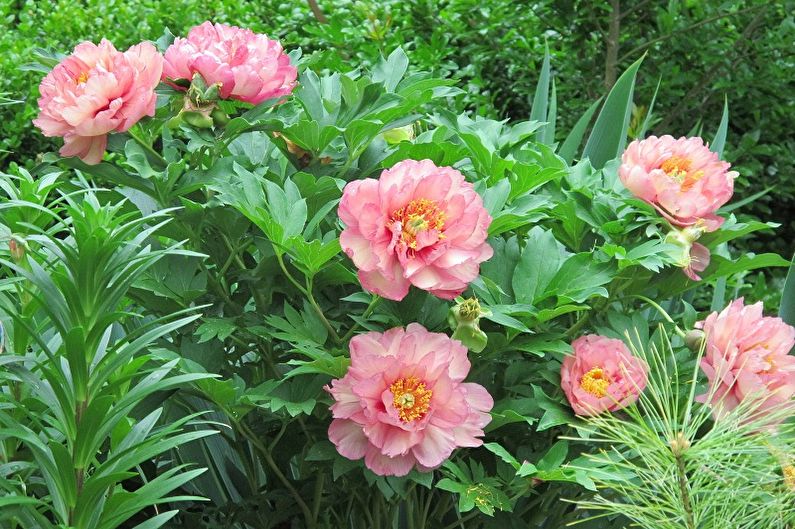
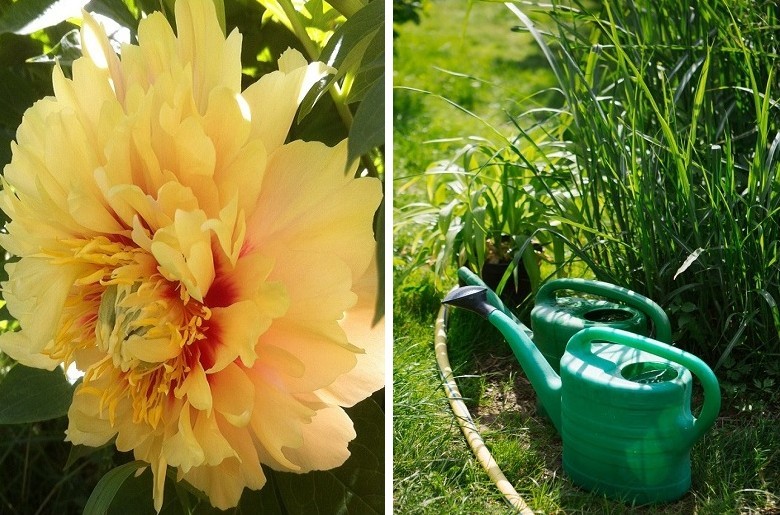
Peony pruning
This type of peony needs pruning every spring. Obsolete, dried, broken branches are separated from the plant. It is also advisable to prune the shrub after the flowering period. It is necessary to get rid of the heads with seeds and cut the branches a little.
Chinese experts insist on a “haircut” of peonies every 2 decades. The process consists in cutting off each shoot until it reaches the surface of the earth. This approach provides high-quality rejuvenation and development of new kidneys.
Proper carrying out of the haircut procedure provides good quality and a large number of future colors.
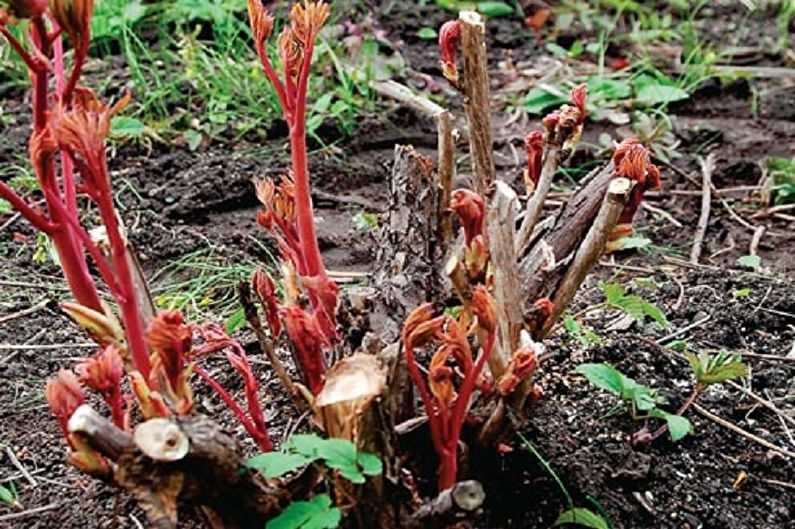
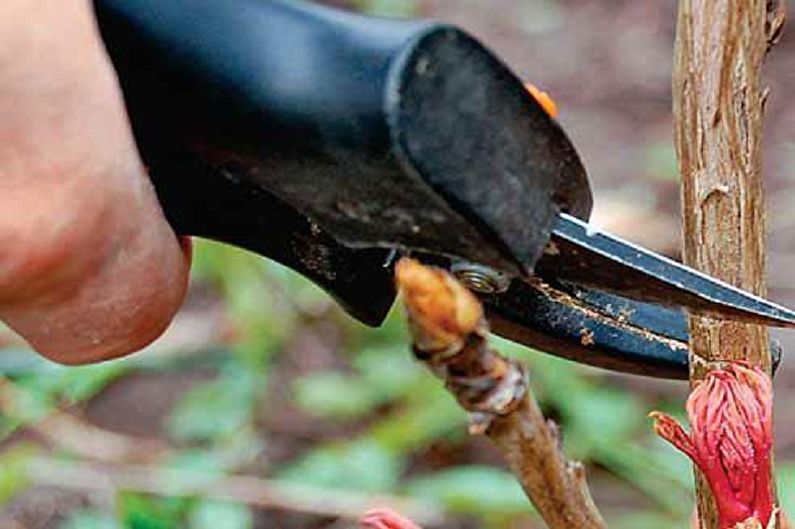
Tree peony transplant
Moving to a new place of residence, this peony is not easy and often painful. As a rule, after a transplant, the bush cannot come to life with its former strength for several years. Therefore, it is necessary to produce it only in case of emergency and with extreme caution.
Try not to injure the rhizome of the bush. When digging a plant, leave the root whole and even with a good layer of earth, which then needs to be washed with a stream of water. Carefully inspect the root system, remove the unhealthy areas, cut too oblong, and sprinkle the slices with a 1% solution of potassium permanganate, finally sprinkle the underground part of the plant with crushed coal.
To multiply the bush, divide it into dividers in the region of the root neck. If you did this using cutting tools, be sure to process the cropped planes. Each of the peonies should have a developed root and several buds, and before planting, place the plant in a solution of clay for 30 minutes.
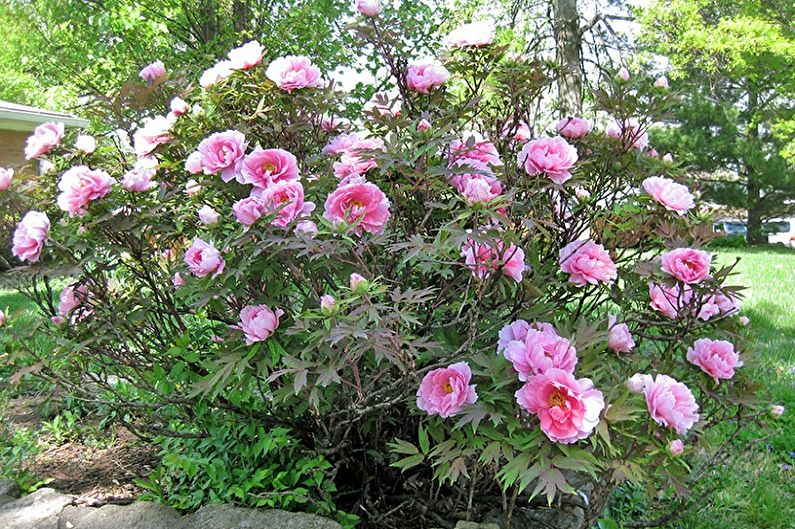
Breeding
As already noted, propagation from seeds is a complex and ineffective process, and division has just been discussed. We add that this method is applicable for adult plants that are 5 years old or more. Shrub needs to be prepared for division in two years. In the first year, the peony needs to be hilled several times by 8–10 cm. In the second year, repeat the procedure, but raise the ground by 20 cm. As a result, the bush acquires young shoots that begin to actively develop the root already in the fall. In the spring, when the snow falls and the soil warms up a bit, you can already start dividing.
A tree peony is propagated by cuttings. The latter should have a lignified structure. Cut them at the end of June, separating the bud along with the woody part of the shoot. Cut half the sheet and fasten them to a depth of 1-2 cm in containers with peat and sand. Cover the containers with a bag or glass and arrange for regular spraying and watering. Already at the beginning of autumn, plant them in separate pots and keep them in a warm place until spring. When young bushes begin to grow, they can already be planted in open soil.
Reproduction by layering lasts 2 years. To do this, at the end of spring, pick up strong shoots, make a small incision on the underside, insert the pegs, gently press them to the ground level, and then bury the shoot with 10 cm ground.Watering fresh layering is necessary in the same way as the main bush. In early autumn, the roots will begin to develop, it is then that the shoot can be completely separated from the mother bush and put it in its own place.
Finally, the most reliable method is vaccination propagation. The vaccine itself should be done on the rhizome of the herbaceous variety of peony. In the first week of August, prepare cuttings with a pair of eyes of a tree peony and sharpen their lower area. Insert the stalk into the groove with the wedge configuration at the root of the grassy peony. Securely wrap the connection point with foil. Inoculate the plants that have been vaccinated in a container with moistened sawdust and leave them in the shade.
After 30 days, the young peony can already be transplanted into a separate container, while the lower bud should be 6-8 cm deep. Put the flower in a warm place and grow for one and a half to two years.
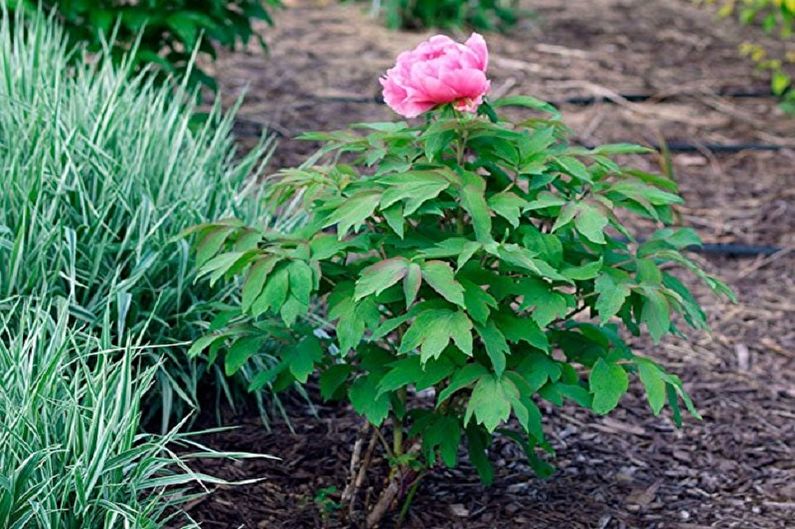
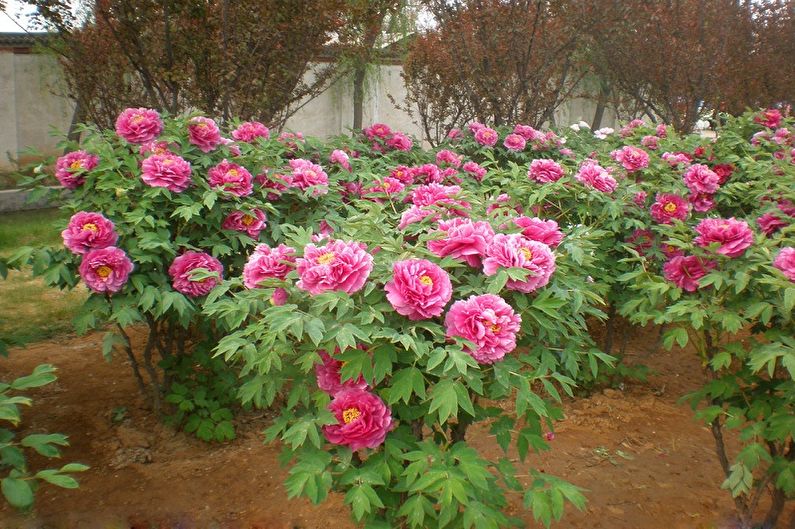
Pests and diseases
Tree peonies are not painful, but like other plants, they are subject to some difficulties. As a rule, ailments happen with old and transplanted peonies.
The biggest nuisance is the formation of gray rot, because it can even lead to the death of a flower. The defeat is treated with a solution of manganese or copper sulfate. Please note that rotted parts must be disposed of.
Another problem is brown spots on the foliage. Cut and burn such leaves so that the disease is not transmitted to other plants. Sprinkle the bush itself with Bordeaux liquid according to the instructions for use.

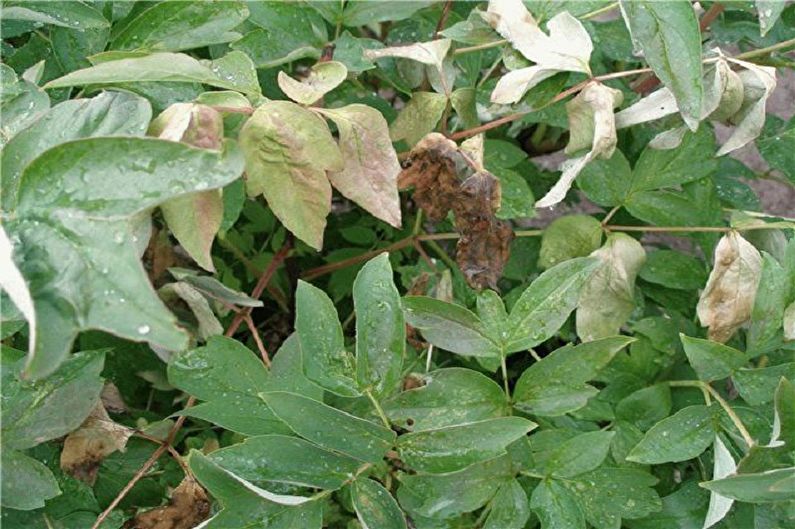
Winter preparations
The tree peony is highly resistant to frost. In autumn, shoots should be covered solely to block access to birds. At the same time, for latitudes that differ in harsh winters, it is recommended to cut the leaves by a third and cover the plants.
Keep in mind that frost is not as dangerous for a bush as thaw periods, because at that time a peony may begin to wake up, but subsequent cooling will destroy the entire bush.
To avoid such troubles, in the middle of autumn fasten the shoots together, then cover the soil with peat and in the first really cold wind cover a tree-like peony with an impromptu hut made of leaves, a dense layer of small bark or bags, special packages.
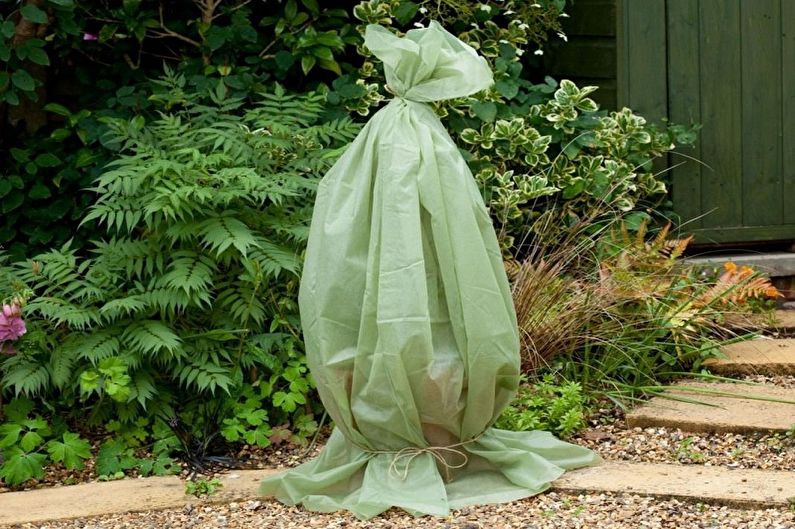
Tree peonies - photo
The flowers of tree-shaped peonies are presented in a wide color spectrum. If you are on the verge of choosing a variety for your own garden, you will certainly be inspired by a selection of photos with these beautiful plants in a lush variety of shades and shapes.
